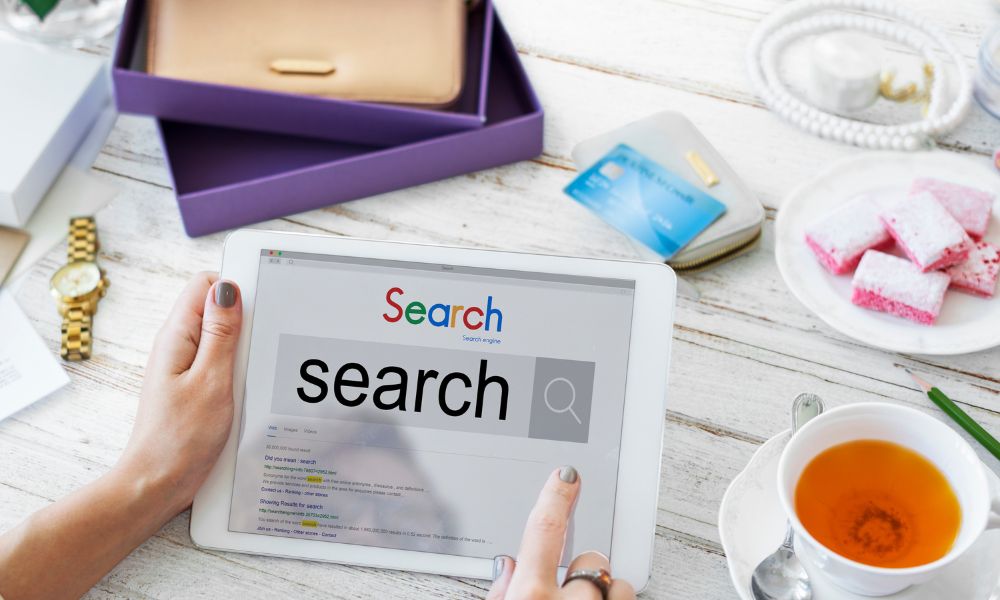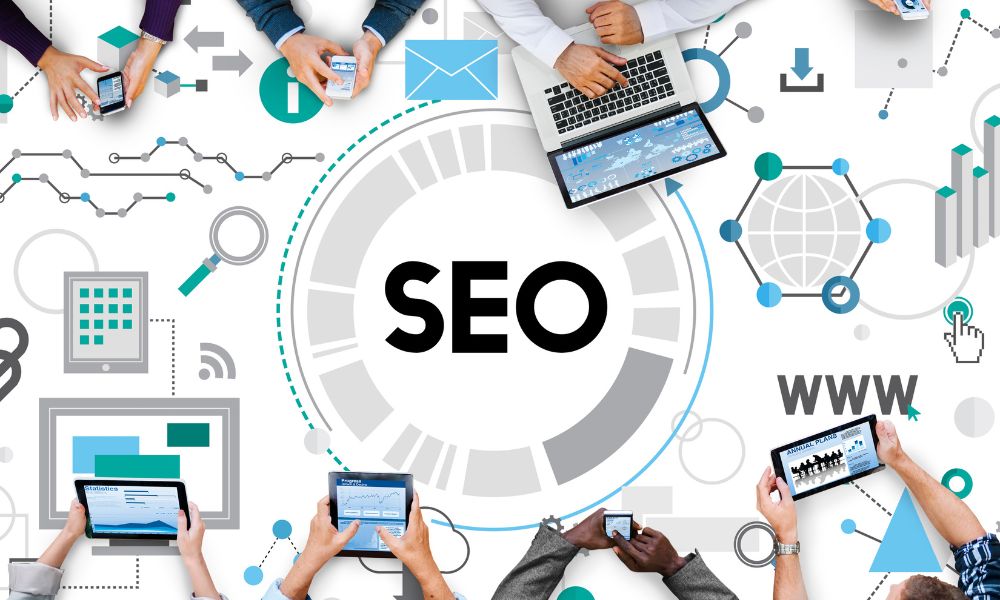
There is a moment every marketer knows too well. You publish a great piece of content, optimize every keyword, build the perfect title, and wait for the rankings to climb. Weeks pass. Nothing moves. Maybe a small bump, but not what you hoped for. The truth is simple. Traditional SEO alone is no longer enough to win attention or authority in a crowded search landscape.
Meanwhile, influencer marketing keeps delivering fast traction, community trust, and high engagement. What most brands still overlook is that these two strategies are not separate worlds. When combined the right way, they boost each other and create a level of momentum you cannot achieve with either one alone.
Influencers help you earn the signals Google cares about. Mentions from trusted voices. High-authority backlinks. Real engagement from real people. More branded searches. More time spent on your site. These are the same signals that push your pages higher on search results.
The strongest SEO strategies now start with people, not just algorithms. Let’s explore how to make it work for your brand.
Why Your SEO Strategy Is Incomplete Without Influencer Marketing
For years, we’ve thought of SEO as a technical game of keywords, meta tags, and site structure. But Google has evolved. Its core mission is to surface helpful, reliable, and people-first content. This is formally known as E-E-A-T: Experience, Expertise, Authoritativeness, and Trustworthiness.
The critical question is: how does Google know your brand is an expert worthy of trust?
It looks for signals from the wider web. And who are the most powerful sources of these signals today? Influencers.
Influencers have already built the authority, community, and credibility that Google is trying to measure. When they talk about your brand, create content with your product, or link to your resources, they are sending a powerful signal to Google: “This brand is trusted in this space.”
Creator content doesn’t just support search behavior; it actively builds the credibility that modern SEO demands. If you are new to creator partnerships or want a full overview of the landscape, this complete influencer marketing guide explains how brands build trust, credibility, and long-term visibility through creators.
Why Influencer Marketing and SEO Work Better Together Than Alone
On their own, each channel has limitations. SEO can be slow and impersonal. Influencer marketing can deliver a flash of traffic that quickly fades. But when combined, they create a powerful, self-reinforcing cycle.
- Social media drives new search behavior: A viewer sees a compelling product tutorial on TikTok. Their next step isn’t always to click the link in the bio; it’s to open a new tab and Google the brand name. This is the “discovery to search” pipeline in action.
- Influencers generate branded search volume: This is a known, powerful ranking signal. When hundreds or thousands of people search for your brand name, Google interprets this as strong user intent and brand relevance, which can boost your rankings for all related terms.
- Social proof increases click-through rates (CTR): When your page appears in search results, a user who has seen an influencer talk about your brand is far more likely to click on it. A higher CTR tells Google your result is relevant and satisfies the query, which can directly improve your ranking position.
How Influencer Marketing Powers Your SEO Engine
Influencer marketing is not just a brand awareness tool. It directly strengthens the signals Google looks for when determining which websites deserve higher rankings. When creators talk about your product, review it, or link to your content, they help fuel the same system that powers long-term SEO growth. Here is how the connection works.
1) Building High Authority Backlinks Without Begging
Earning backlinks is one of the hardest parts of SEO. Outreach emails, guest posts, and cold pitches often take months to pay off. Influencers shortcut this entire process. When they write blog reviews, add your links to a YouTube description, share resources on Pinterest, or mention your content in a newsletter, you gain organic, high-quality backlinks without having to ask for them. These links are natural, relevant, and trusted, which is exactly what Google values.
2) Generating Brand Mentions That Strengthen Credibility
Not every influencer mention includes a link, but even unlinked mentions support your SEO. Google uses brand references across the web to understand who you are and how relevant you are. When creators talk about your brand, review your product, or discuss your category, they build digital signals that show search engines you are a real, credible entity. This helps reinforce your authority in competitive niches.
3) Creating Topical Authority Through Reviews and UGC
When multiple influencers create content around your product, you build a wider ecosystem of information that surrounds your target keywords. Reviews, tutorials, comparisons, and how-to videos all contribute to your topical relevance. The more content that exists about your product, the more Google views your brand as a central source for that topic. This can boost your ability to rank not only for core keywords, but for long tail and semantic variations as well.
4) Driving Qualified Traffic That Improves On-Site SEO Signals
Traffic from creator campaigns behaves differently than traffic from ads. Influencer audiences arrive with trust already established. They stay longer, explore more pages, and convert at higher rates. These behaviors send strong signals to Google: low bounce rates, high dwell time, and increased engagement. When search engines see that users find your site valuable, your rankings benefit over time.
Influencers essentially bring you pre-warmed audiences who help strengthen the performance signals that SEO depends on. The result is a stronger, more resilient search presence built on real engagement, not guesswork.

Influencer Content That Directly Boosts SEO Performance
Not all influencer content is created equal. If your goal is to boost SEO, you should strategically guide creators toward these high-impact formats.
- Long-Form YouTube Reviews and Tutorials. This is the king of SEO-friendly influencer content. YouTube is the second-largest search engine in the world. These videos often rank directly in Google results, drive massive traffic, and allow for multiple, valuable links in the description.
- Influencer Blog Collaborations. A blog post on a creator’s high-authority website is a direct injection of SEO value. It provides a powerful backlink and can rank for its own set of keywords, sending consistent, passive traffic your way.
- Short-Form Social Content That Sparks Search Demand. A viral TikTok or Instagram Reel might not have a clickable link, but its power is in creating demand. A clever, relatable video can cause a direct spike in branded search queries as viewers rush to Google to find you.
- Pinterest Pins and Idea Pins. Pinterest is a visual search engine. Content here is evergreen, meaning a single pin can drive referral traffic for years, making it an incredible long-term SEO asset.
- Affiliate and Product Roundup Content. Influencers often contribute to or publish “best of” lists and gift guides. Securing a spot in these roundups, which are often SEO-optimized and rank highly for commercial intent keywords, is a fantastic way to earn links and visibility.
Your 5 Step Framework to Integrate Influencer Marketing and SEO
Brands that combine influencer marketing with SEO in a structured way see faster rankings, stronger authority, and more predictable growth. Ready to put this into practice? Follow this actionable framework.
- Step 1: Conduct Keyword Research with Influencer Opportunities in Mind – Look for keywords that creators can naturally integrate. Think “how to” phrases, “best [product] for [problem],” and “[product] review.” These are the terms that fit seamlessly into a creator’s authentic content.
- Step 2: Create Linkable Assets Designed for Collaboration – Don’t just send influencers to your homepage. Create pages worth linking to. This could be a unique, free tool, an original research report, a definitive guide, or a high-quality product sample that is inherently reviewable.
- Step 3: Identify and Partner with SEO-Relevant Creators – strong presence on SEO friendly platforms such as blogs, YouTube, and Pinterest. Check the Domain Authority of their websites and review the quality of their past content. Tools like the Influencer Discovery Tool can help you filter creators by relevance, niche strength, and platform footprint so you can identify partners who support both social engagement and search performance.
- Step 4: Craft a Collaborative Brief with Clear SEO Goals – Be transparent with your creators. Your brief should outline:
- The key landing page URL you want them to link to.
- A suggested anchor text phrase (e.g., “best organic coffee”).
- The core message that ties their content to your keyword strategy, while giving them full creative freedom.
- Step 5: Measure the Combined Impact on Rankings and Traffic – Go beyond likes and shares. Use Google Search Console to track ranking improvements for your target keywords. Use Google Analytics to monitor organic traffic growth. Use a backlink tracker (like Ahrefs or Semrush) to monitor new referring domains and their quality.
Influencer-Driven Link Building vs Traditional Outreach
Link building has always been one of the most difficult parts of SEO. Traditional outreach often means sending hundreds of emails, chasing lukewarm opportunities, and hoping someone agrees to add your link. Influencer-driven link building works very differently, and in most cases, much better.
- It’s Voluntary: Influencers link to you because they genuinely value your product and want to share it with their audience.
- It’s Contextual: The link exists within high-quality, relevant content, which Google values much more than a link in a directory or blog comment.
- It’s Cost-Effective: You’re often paying for the content creation and distribution, with the powerful backlink as a valuable byproduct, reducing your effective cost per link.
- It’s Authentic: It avoids the awkwardness and low success rate of cold email begging.
Influencer-driven link building gives you what SEO has always needed. Natural, relevant, high-quality backlinks that appear because someone trusted your product enough to recommend it.

What to Measure: Connecting Influencer Efforts to SEO Wins
To understand how influencer marketing strengthens your SEO, you need to track the signals that search engines use to evaluate authority, credibility, and relevance. To prove ROI, you must track the right metrics. These metrics show the real impact of creator collaborations on your search performance.
- Tracking Organic Traffic Growth from Target Keywords: Are the keywords you targeted in your influencer briefs moving up in rankings? Is there a noticeable uptick in organic traffic to the specific product or landing pages you promoted?
- Monitoring New Referring Domains and Backlink Quality: Use SEO tools to track your “link velocity.” After a campaign launches, you should see a spike in new, high-quality referring domains from the influencers’ platforms. Check the Domain Rating (DR) of these new links.
- Measuring Improvements in Branded Search Volume: This is one of the clearest indicators of influence. Use Google Analytics and Google Trends to monitor searches for your brand name. A successful campaign will create a visible and sustained increase.
For deeper guidance on calculating financial returns and campaign efficiency, you can explore how brands measure influencer marketing ROI across channels.
Platform Influence on SEO Signals
Each channel creates different types of signals that help strengthen your authority, increase branded search, or improve long-term visibility. Understanding how each platform contributes to search performance helps you design smarter, more effective influencer campaigns. A multi-platform strategy is key.
- YouTube: YouTube is the strongest SEO powerhouse among all social platforms. Videos often rank directly on Google, and creators naturally include links in descriptions. Long watch times and high engagement also signal authority and trust around your brand.
- TikTok: The king of demand generation. TikTok drives fast discovery and immediate spikes in search demand. When a product goes viral, people turn to Google to compare prices, read reviews, and learn more. This increase in branded search volume strengthens your relevance in Google’s eyes.
- Instagram: Supports SEO indirectly by building recognition, credibility, and UGC volume. When users see your product across stories, reels, or creator posts, they are more likely to search for your brand or explore your website. This fuels branded search growth and improves click-through rates on your search listings.
- Pinterest: Pinterest is an evergreen traffic machine. Pins and idea pins act like visual search results, appearing for months or even years. Influencer content on Pinterest creates long-lasting referral traffic and supports top-of-funnel keyword ecosystems.
- Blogs and Written Content: Blogs remain the most direct source of SEO benefits. Written content from influencers contributes contextual backlinks, semantic relevance, and keyword-rich coverage of your product or category. This is one of the strongest ways creators can directly boost your ranking potential.
Common Pitfalls to Avoid When Combining Influencer Marketing and SEO
Bringing influencer marketing and SEO together can create powerful results, but only when the strategy is executed correctly. Many brands make avoidable mistakes that weaken both channels. Here are the most common pitfalls and how to sidestep them.
- Choosing Influencers with Low Authority Websites: Not every creator has a strong website or blog. If an influencer’s site has low authority or thin content, the backlinks they provide may have little SEO value. In some cases, they can even appear spam-like. Focus on creators with established blogs, active YouTube channels, or platforms that produce meaningful signals.
- Forcing Inauthentic or Irrelevant Keyword Drops: Asking creators to insert awkward keywords or unnatural phrases hurts both performance and trust. Search engines can detect low-quality keyword stuffing, and audiences can feel when the message is forced. Keywords should flow naturally within the creator’s voice and content style.
- Neglecting to Build an SEO-Optimized Landing Page for the Campaign: Bringing visitors to a weak or unoptimized page wastes the traffic and the momentum you built through creator content. Every influencer campaign should point to a landing page that is fast, structured, keyword-aligned, and built to convert.
- Measuring Only Social Metrics: It is easy to look at likes, reach, and comments, but these alone do not show the full impact on SEO. You need to track backlinks, referring domains, branded search growth, keyword movement, and organic traffic. When you measure both sides, you see the true value of the combined strategy.

The Future of Search Is Social: What This Means for Your Brand
Search and social are no longer separate worlds. The journey is no longer just Google -> Website. It’s TikTok -> Google -> Website. Or YouTube -> Google -> Website. Today’s customers discover products on social media, validate them through Google, and return to social to see real experiences.
This loop shapes how brands earn attention, trust, and long-term visibility. The brands winning today are the ones that understand that authority does not come only from optimized pages. It comes from people who talk about you, share your content, and trust your product enough to recommend it.
Influencer marketing accelerates everything that matters for SEO. It increases branded search, builds high-quality backlinks, strengthens your topical authority, and brings engaged traffic that helps your pages perform better. SEO then amplifies this momentum by capturing the demand created through creator content. Together, they create a growth engine that compounds over time.
Search behavior is shifting toward creators. Google is rewarding authority, trust, and relevance. The brands that combine influencer marketing and SEO will dominate in both discovery and conversion. This is not a trend. It is the future of sustainable organic growth.
If you want help building an influencer program that strengthens both your search visibility and your brand credibility, our influencer marketing agency can support you with strategy, creator sourcing, and campaign execution.”



